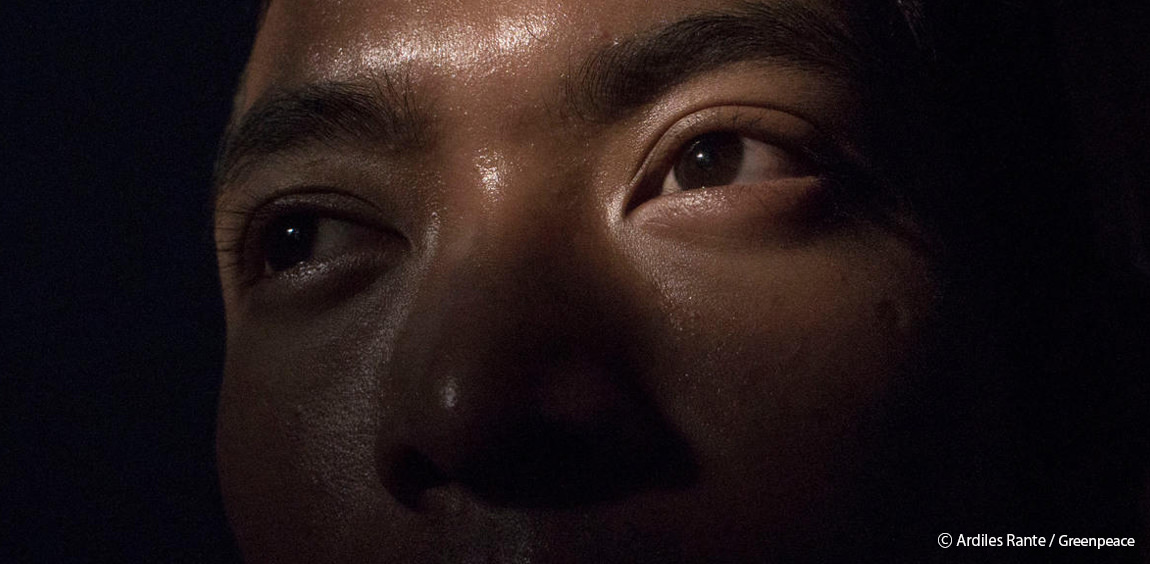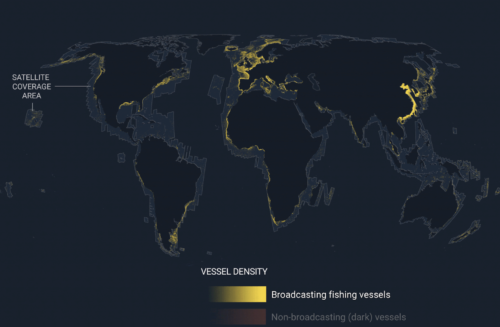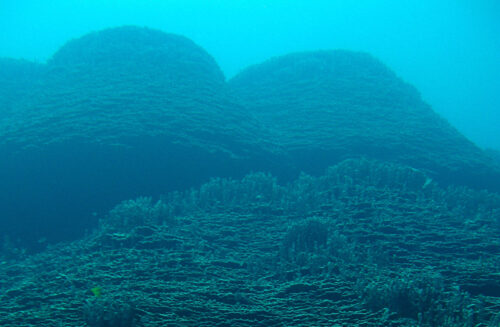Projects
Forced Labor at Sea
Human rights abuses on the open ocean

Forced labor, a form of modern slavery, is a serious problem in fisheries, with potentially tens of thousands of fishers as victims. These abuses happen out of sight of authorities, seafood buyers and families of fishers. We work to make this problem visible by training a machine learning model using data from trusted sources to identify patterns across vessels with a high risk of forced labor, and comparing these patterns to those exhibited by all vessels observable via public tracking. Where behaviors appear similar, a high risk of forced labor may be present. With the goal of creating greater transparency, we collaborate with port authorities and seafood industry stakeholders to receive more data, improving our modeling and helping guide inspections and seafood purchasing.
Hidden, unquantified abuse
Forced labor abuses on the ocean are difficult to detect and harder to eliminate. Often, fishers are transported from one vessel to another and do not recall on which vessels the abusive practices had occurred. To compound this lack of clarity, capacity issues mean that most port authorities are unable to inspect every vessel that arrives in their port or operates in their waters. And fishers who survive such abuses do not often have the resources to denounce them. Consequently, the number of reported forced labor abuse cases is likely a small fraction of the actual total occurrences.
Data for collaboration
We aim to estimate the true extent of forced labor in global fisheries. Using historical data on fishing vessels worldwide, our team of researchers use machine learning algorithms trained on trusted sources of forced labor reporting to predict if vessels have high or low risk of forced labor based on their movement patterns and such characteristics as gear type, number of voyages per year and total fishing hours on the high seas. This information is computed using Global Fishing Watch algorithms on automatic identification system data, and in the future, will most likely integrate vessel monitoring system data as well. In the coming months, we aim to collaborate with port authorities worldwide, providing them with outputs from the model and helping inform their decisions about which vessels to prioritize for inspections. Using their feedback and field observations of onboard labor conditions, we hope to continually improve the models to ensure they are facilitating real changes in ocean governance.
Research Lead
Contributing Team
Papers
Datasets
Recent Work

Rise in Unregulated Squid Fishing Poses Challenges—and An Opportunity
Highly mobile fisheries present more possibilities for data-driven approach to inform regulation.

Emerging technology gives first ever global view of hidden vessels
Satellite radar and machine learning publicly reveal previously unseen vessel activity around the world Washington, D.C. – Global Fishing Watch has developed and publicly released the first ever global map of previously undetected dark fleets,

Satellite Technology Can Reveal Collision Risks for Whale Sharks
Global Fishing Watch data helps researchers link shipping traffic to whale shark fatalities The whale shark is the world’s largest fish, with adults weighing up to 5,000 pounds and reaching up to 20 meters in

Satellite Data Casts Light on Seamounts at Risk
Emerging tools and datasets help quantify fishing pressure and can inform management at remote, unmonitored seamounts Seamounts—large underwater mountains— hold vital biological diversity, but they also contend with heavy exploitation. Numbering in the tens of